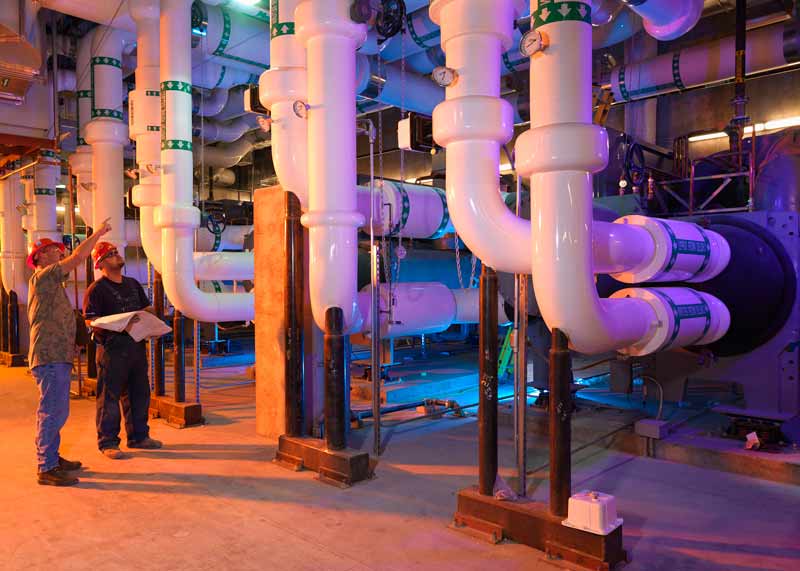Construction & Industrial laborers are in high demand, and competition is fierce. The construction industry has seen a shortage of skilled labor for years. Whether you’re looking to hire one or many workers, it’s important to know your options when recruiting construction & Industrial labor. You will need to start with defining what type of laborer you’re looking for- entry level laborer, general laborer, heavy equipment operator? Once you’ve done that, it’s time to look into the various ways that you can recruit them!
Construction & Industrial Labor Shortage
The National Association of Home Builders (NAHB) conducted a survey in which builders ranked labor as their top worry, with 85 percent expecting future cost and availability problems, up from 13% in 2011.
The construction & Industrial labor shortage actually existed before the pandemic. But with a red-hot housing market and with more individuals working from home, new house construction and improvement are skyrocketing. Construction firms will need to hire 430,000 workers this year and 1 million more over the next two years in order to keep up in an underemployed industry.
The construction & Industrial sectors were shut down for a few months in 2020 during the pandemic, but were shortly recognized as essential, allowing stopped projects to continue. However, in that brief period, the industries lost more than 1 million employees. Since the pandemic, they have recovered nearly 80% of its workforce, but are still down 238,000 workers from pre-pandemic levels as of June 2021, according to the Labor Department.
Construction & Industrial Labor Costs Rising
In order to lure workers into the industries, entry level construction & industrial labor pay has dramatically increased. Some builders report a 40% increase for their construction labor rates. Yet not all construction & industrial laborers are in as significant demand.
The kinds of work that pay well typically need technical understanding and a lot of training, while others might require certifications or bachelor’s degrees. Add that to the labor crunch and you’ve got the recipe for a serious labor shortage, especially when you add in prevalent misconceptions that keep many individuals from considering construction or industrial work to begin with.
“When you say 300,000 available jobs, they’re not all skilled labor—but many of them are. For the past 20 years, we haven’t trained and invested money in educating our workforce, while a lot of folks are retiring from the business. So the skills gap will only get bigger before it gets smaller.” says Ed Brady, president and CEO of the Home Builders Institute. Not to mention, many shop and carpentry programs have been chopped from high school curriculums, siphoning away that funnels to the industry.
Average Hourly Rate For Construction & Industrial Laborer
Construction & industrial, unlike other industries with labor shortages such as restaurants and hospitality, pays almost double the average hourly wage. On average, a restaurant or hotel employee makes $18.23 per hour, whereas a construction worker earns $32.86 per hour, according to the Bureau of Labor Statistics.
All this means that pay isn’t the problem. So how do construction, industrial, and manufacturing firms lure workers into the industry?
Construction & industrial Labor Recruitment Strategies
Build Your Brand
Get found. Raise awareness of your company, who you are, and what you offer. You’re not the only one looking for laborers. You must offer a compelling reason for workers to select you over others.
Create A Pro-Worker Culture
Prior to the 2000s, working as a builder entailed working long hours in sometimes harsh conditions. Employees back then had few alternatives, unlike today. Many businesses today have taken steps to create more attractive work cultures, flexibility and programs. Some have implemented flexible employment programs that showed great results. They allowed shift sharing, part-time employment, compressed workweeks, and even telecommuting.
Promote How You Promote
Attract workers who are eager to be dedicated and loyal if you make it clear that your firm allows for growth. This is especially true in the construction sector, where there are job vacancies for younger workers. Outline the career goals that you can offer, followed by an explanation of the training or education needed to achieve those goals.
Leverage Technology
Understand that younger workers naturally gravitate toward electronics and computers – it’s really all they’ve known. You’ll have to hire these younger workers at some point – probably sooner than later, as they’ll make up about 75% of the global workforce by 2025.
Think about how you can implement technologies that could attract these younger workers and also benefit your business. According to the Associated General Contractors of America, almost one-quarter of contractors use cutting-edge technology like robots, drones, 3D printers, and GPS-enabled equipment. If you don’t adapt fast enough, you’ll soon have a serious manpower shortage.
Implement Signing Bonuses
If you have the cash, give signing bonuses to entice more people to apply for your firm. However, if you want them to apply the principles of freedom and entrepreneurship, you must make them conditional on a certain amount of time in service. Otherwise, individuals may quit their jobs as soon as they have received their bonuses.
Fine Tune Your Website & Careers Page
Your website these days must be easily found by workers, and clearly guide people toward your careers page. If they have to do more than 2-3 clicks to find information about working for you, then you’ve probably lost most of the laborers who would have applied.
Do a quick Google search (use incognito mode in Chrome) and try to find your business. Is it on the first page of results? If not, then you probably need to do some SEO and content marketing work to make your website more visible to those online.
Job Boards
Like it or not, most prospective laborers still use the typical jobs boards to find work. Especially for your entry level positions, get prospects through these channels.
For your specialized roles, think about using recruitment firms that have pools of qualified candidates looking for roles. Even if they are a bit more money, think about the opportunity cost of not filling that specialized role and the money you’re NOT making because of the vacancy.
Don’t Forget About Referrals
Word of mouth is powerful. When our family, friends, or acquaintances refer to something, it carries with it much more credibility than a cold contact. Ask your employees to share your job placements on their social media.
Don’t Be “That Business” – Follow Up
Even if you don’t plan on going forward with a prospect, be sure to reply back to them and let them know. They’ve taken the time to apply, and it’s just plain courteous to tell them one way or the other.
With those that you do plan to interview, have a clear process. Over communicate. Remember, competition for laborers is fierce, and you’ve probably got to hound them a bit even to accept an offer – of which they could have multiple. Show them that you care and are organized. It makes a difference.
Conclusion
Today’s workforce is different, and changing quickly. It may take a little more effort on your part to land new workers with such a competitive market. Employ the above construction & industrial labor recruitment strategies to help you land roles & move your business forward.
For help with your website or marketing, reach out to Profile by Design for a free consultation and quote!

